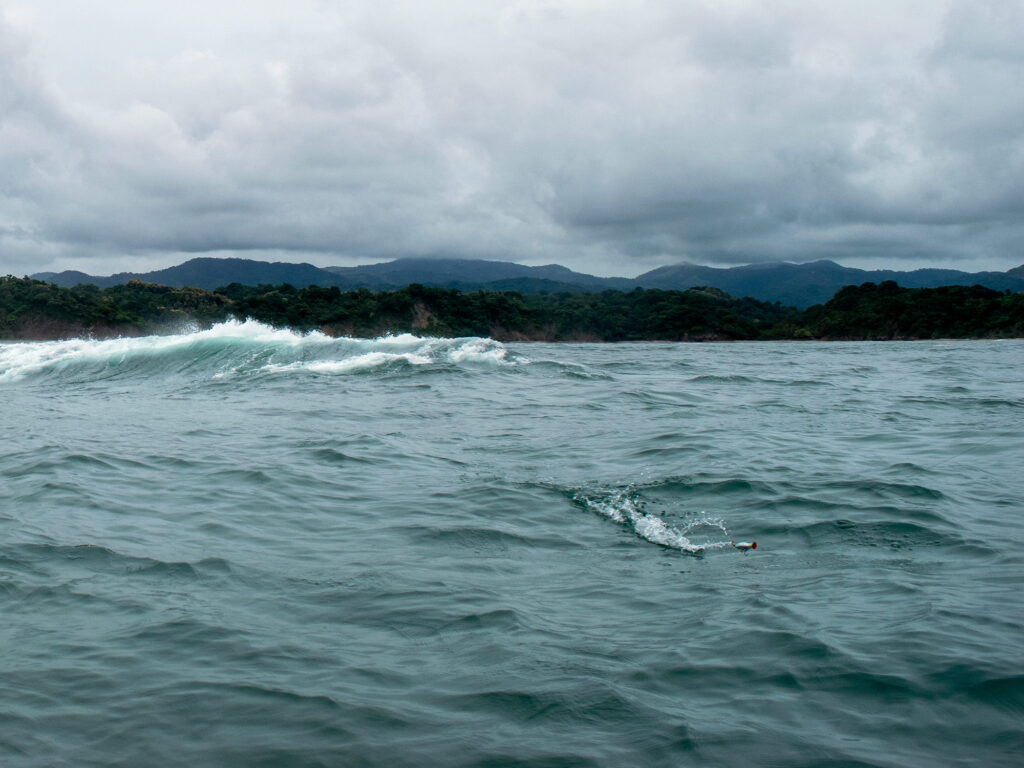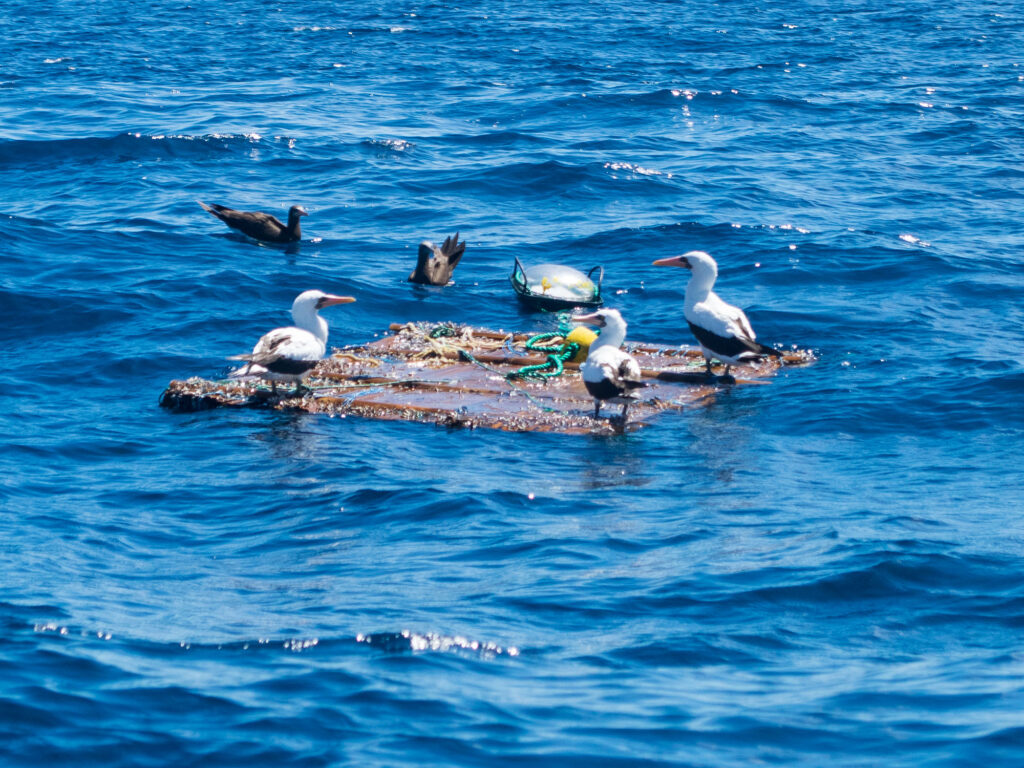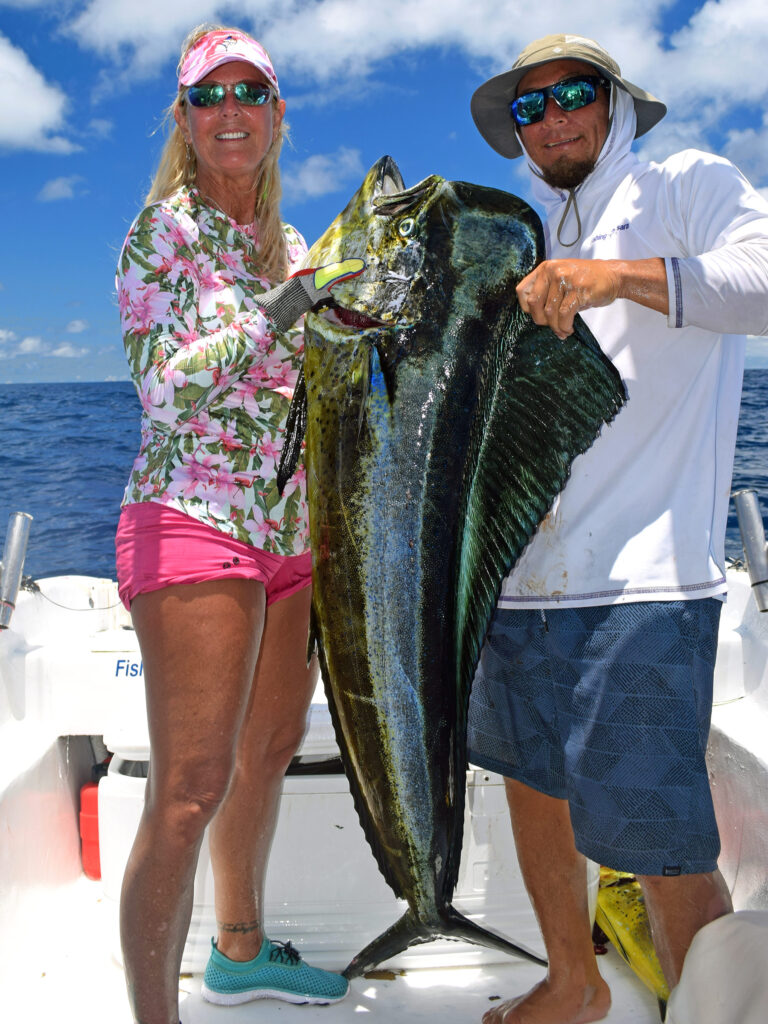
Costa Rica is a must-visit destination for saltwater anglers, offering a variety of inshore and offshore species all year long. Interested in breaking a line-class or all-tackle world record? The International Game Fish Association (IGFA) documents anglers fishing in Costa Rica have set close to 200 world records, including bottom fish and pelagic species such as Pacific cubera snapper and sailfish.
One Pacific hotspot is the fishy coast off Nosara. Given its remote location and limited infrastructure, the fishing pressure is low compared to more popular fishing communities like Los Suenos, Quepos or Crocodile Bay. And unlike other Costa Rican fishing spots, the fishing grounds off Nosara are just six miles from the beach. Fishing along this northwest region is truly for diehard anglers. You won’t find mega-million-dollar fishing machines or fancy night clubs, but it is a place where world-class fish roam.
Costa Rica Inshore Targets

I stepped onto the small wooden skiff that transports clients from Playa Guiones to our 27-foot super panga called the FV Explorer. We were fishing with Fishing Nosara, a top sport-fishing operation that also offers a great vacation stay. Morning excitement was building, even if expectations weren’t too high. We were visiting in August, the end of peak season. After navigating the surf zone — including three sets of head-to-overhead waves — we made it to the mooring area.
Captain Antonio and mate Raffa greeted us. Antonio quickly asked me, What species do you want to target today? Familiar with the area, I answered, “Let’s spend the morning inshore, targeting roosterfish or cubera snapper and the afternoon targeting offshore species.”
A few minutes later, we were trolling small metal lures and catching foot-long skipjack tuna and bonito for baitfish. Once the tuna tubes were filled, we hit the local fishing hotspots, spending a hot, hazy morning in search mode, tossing surface plugs for roosterfish and bottom fishing for cubera snapper. But the fishing was slow and we didn’t hook a fish. Our spirits were low until the VHF radio started chirping loudly and a Spanish voice shouted, “Fishing Vessel Explorer, can you read me?”
A Spotlight on Dorado

When Antonio got off the radio, he eagerly asked us if we wanted to chase dorado. He told us his colleague had spotted a homemade fish aggregating device (FAD) about 10 miles south of our location. It was swarming with dorado. FADs are manmade structures that are commonly deployed or anchored throughout the Pacific Ocean to concentrate marine life. Fish are attracted to these manmade objects just like natural floating debris, such as seaweed, logs and coconuts.
“Sure,” I answered to Antonio, but with less enthusiasm than he would have liked. I hadn’t flown to Costa Rica to catch school-size dorado.
My mahi-mahi fishing experience dates back to my days as a federal fishery observer aboard commercial pelagic longline vessels in the northwest Atlantic Ocean. As a fish biologist in the late-90s, I measured numerous mahi-mahi that were caught incidentally on longline gear. Plus, I landed plenty myself on hook-and-line along the weedlines where we often set commercial fishing gear. During my time on the high seas, I learned mahi-mahi are pretty easy to catch in large numbers. Despite being an acrobatic flyer, I had never battled a large one. The biggest mahi-mahi I landed weighed 15 pounds, and the largest I recorded was maybe 30 pounds.
In my opinion, dorado are the most colorful fish in the ocean — bright yellow, blue, green, or other electric tints on their sides. They change color dramatically as soon as they hit the deck. I’ve seen schoolies change from bright yellow to blue to grey in less than a minute. Although both sexes have similar vibrant displays, their body morphology is much different. Females (called cows) have a sloping forehead; males (bulls) have a blunt, vertical forehead. Unusual for the fishing kingdom, males grow much larger than females.
Hot Costa Rica Dorado Action

“How big are these dorado?” I asked Antonio, as we reached the homemade FAD. Raffa was rigging 50-pound-class boat rods with large live baits. Terminal tackle included an 8/0 Eagle Claw circle hook tied to seven feet of 50-pound-test fluorocarbon leader. “Grande!” he said. Apparently, the light-wire circle hooks were the key to hookups in the clear Costa Rica waters.
First tossing frisky large baits into the blue abyss and reaching a slow trolling speed, we approached the FAD from the south. The captain yelled “Listo!?” Almost immediately after passing the small FAD, our two stout rods doubled over. The reels started to scream.
My wife and I quickly grabbed the rods and held on. Handling the rod with a tight grip, I was confused by the sheer power of the fish. These fish couldn’t be dorado. They were both digging down like a yellowfin tuna or billfish. Glancing over at my wife, she too had a look of excitement and shock. I could feel the power of every head shake. When the fish hesitated, we pumped and retrieved as much line as possible.
About 10 minutes later, both fish launched toward the surface at full speed, going airborne like missiles fired from a sub. Twisting and turning out of the water, it became apparent our fish were not majestic sailfish, but iridescent bull dorado. With each crank of the reel, our fish came closer to the gunwale. My wife’s flamboyant green-blue beast was first to the gaff. The fish was so big that Antionio had to help Raffa heave it over the gunwale. About a minute later, my dolphin met the same fate. Thrashing on the deck, the colorful fish began to change colors like LEDs synchronized to music. With our hearts pounding and sweat dripping off our faces, the adrenaline rush left us wanting more.
Big Dorado Want Big Baits

I was shocked the dorado attacked such large baits given their relatively small mouths.
“This is the only way to catch big dorado,” Antonio told me. “The bigger, the better. If you want to slay schooling dorado you can sight-fish with small jigs, plugs or natural baits. But if you’re after large bulls, you need to troll large marlin-type plugs or live tuna at least 12 inches long.
“The bigger dorado are often found below the smaller ones, so you have to troll slowly to allow the baits to swim deep. Obviously, small dorado are found year-round in our area, but if you want to catch the big bulls, then you need to fish during June through August.”
How deep do the baits swim? I asked.
“Our baits are probably 30 to 40 feet down,” explained Antonio. “Also, if you noticed, we started trolling about 100 yards before the FAD. If we throw the baits out next to the FAD, they will just get attacked by the smaller dorado first.”
With the hot sun beating down and calm seas, we continued hooking, fighting, and landing dorado until the bait was gone. The cooler was full enough to feed a village, so we called it a day and headed back to the mooring area. Later, we brought our fresh catch to La Luna, our favorite local restaurant, where they cooked us a feast while we sipped margaritas and watched the sunset.








